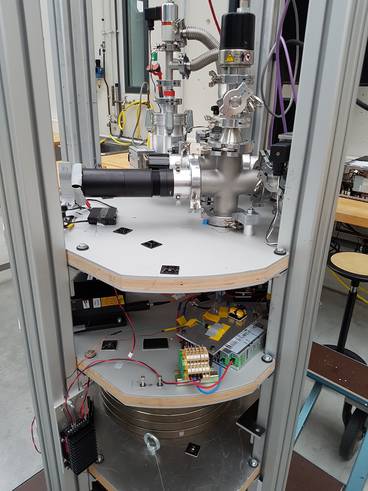Graphene-on-copper lightsails for laser-induced propulsion (GrapheneSail)

research area: materials sciences
experiment title:
Graphene-on-copper lightsails for laser-induced propulsion
experiment acronym: GrapheneSail
funding agency: ESA
grant number: CORA - Program
performing organization:
RWTH Aachen, Germany
prime investigator:
Dr. Santiago J. Cartamil-Bueno
(Dr. Rocco Gaudenzi, Davide Stefani)
experiment objective
abstract
Light from the Sun or a laser beam can be used to transfer momentum to matter and displace low-mass objects. Space agencies have successfully tested the solar sail technology for low-Earth orbit applications, navigation control, and Solar System exploration, being IKAROS (2010) the first demonstration of spacecraft with a sail as primary propulsion system. However, the thrust from radiation pressure is very low, and prevents its use for interstellar travel unless a large-area sail of thin and low-mass material is used.
Graphene, a single-layer of graphite, is proposed as one of the promising candidates for light sail material due to its ultimate thinness, low mass density and exceptional properties. Its large optical absorption in the visible (2.3%, wavelength independent) makes the transfer of photon momentum more inefficient than highly reflective materials, although there are routes to enhance its reflectivity. Moreover, graphene ejects electrons upon visible-light illumination via a wavelength-dependent Auger-like effect, which could complement the thrust of a graphene-based light sail.
In this project, we will study the potential use of graphene as light sail and test the scientific claims of electron ejection upon laser irradiation. We will measure the light-induced displacement of weightless samples (~1 mg) consisting on chemical vapor deposited graphene on holey TEM copper grids in vacuum and low-gravity. By using 1W lasers with different wavelengths (450, 532 and 655nm), we will determine the physical mechanism behind the thrust of a graphene light sail and pave the way to new studies on light-matter interaction in 2D materials.
related publications
- Graphene-based spacecraft sail for light-induced propulsion (GrapheneX), Drop Your Thesis! 2017 - Final Report. ESA Human Spaceflight and Exploration, Erasmus Experiment Archive
experiment campaigns
experiment year: 2018
number of drops: 10


 "
"